Why do 17,000 under-fives die daily?
- Published
- comments
Amidou is malnourished, like many Malawian children, and must go to hospital, says the BBC's Fergus Walsh
A "staggering" number of children around the world are dying before the age of five, according to the United Nation's child agency.
Unicef' s latest figures, external estimate every day 17,000 under-fives die - 6.3 million a year - from largely preventable causes.
This is despite the overall rate of infant mortality having been halved in the past two decades.
Most of the deaths happen in the first hours or weeks following birth.
Millennium Development Goal
Unicef says urgent action is needed to accelerate progress towards the Millennium Development Goal (MDG) of cutting infant mortality by two-thirds.
The aim had been to reach the target by the end of 2015, but at current progress it won't be achieved until 2026.
Sub-Saharan Africa still has the highest infant mortality rate - 92 deaths per 1,000 live births, nearly 15 times the average for developed areas of the world.
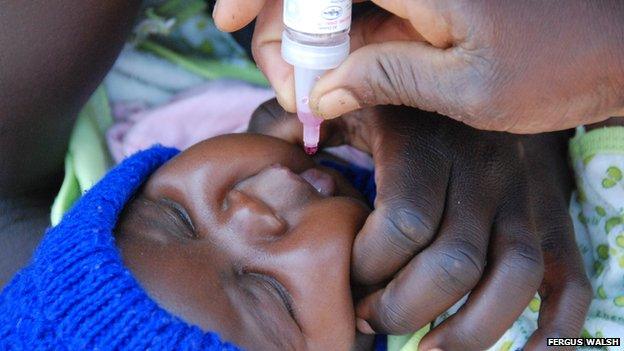
Polio immunisation in Malawi
Malawi has already achieved the MDG, with a decline of 72%.
Mahimbo Mdoe, the head of Unicef in Malawi, said this was a "fantastic achievement" and showed the target could be achieved in very low-income countries.
He said one of the keys to Malawi's success had been the creation of a network of health workers with basic skills, who lived and worked in the community.
Unicef has helped train thousands of these "Health Surveillance Assistants".

Malawi has thousands of community-based health workers
Breastfeeding
They are responsible for a broad range of services, such as immunisation, giving health advice to mothers and treatment for diseases such as pneumonia, diarrhoea and malaria.
"These are high impact, cost-effective measures," said Mr Mdoe.
"Like ensuring children sleep under a mosquito net to protect them from malaria, and encouraging mothers to breastfeed, which boosts a child's immunity and helps them to grow."
But despite the advances in Malawi, it still faces many challenges, including malnutrition, HIV/Aids and poverty.
"Cashgate"
The country is also dealing with the aftermath of a huge corruption scandal known as Cashgate, which became a key issue in elections this summer.
An auditor's report , externalearlier this year suggested the government had been defrauded of more than £30m by corrupt officials in one six-month period in 2013.
The scandal led to international donors withholding aid in protest at poor governance.
In a report, Unicef has called for greater priority to be given to saving lives in the first four weeks of life.
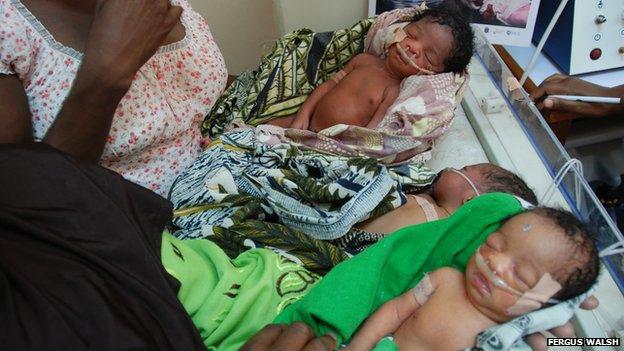
Three premature babies share an incubator in a Lilongwe maternity hospital
Committing to Child Survival: A Promise Renewed, external lists a number of strategies to improve survival.
It says starting to breastfeed within an hour of birth reduces the risk of death in this neonatal period by 44%. Fewer than half of newborns worldwide benefit from this approach.
The report says access to postnatal care is "abysmally low" in many countries in sub-Saharan Africa and South Asia.
Many of those problems are evident in Malawi, which has the world's highest rate of premature births, partly due to factors such as HIV infection, malaria and malnourishment.
Kangaroo care
Bwaila Maternity Hospital in the capital Lilongwe delivers 17,000 births a year. A new facility was opened four years ago with the support of the Rose Project, an Irish charity.
Staff at the hospital told me there were often severe shortages of basic equipment, from gloves to medicines.
Rachel Macleod-Spring, who has been a midwife there for seven years, said: "There have been huge improvements in care here in recent years, and there are much better surroundings for the mothers and babies, but it can still be very frustrating.
"For several months we have been without a basic medicine, a steroid injection, which can help speed the development of the lungs of premature babies, and save lives."
The hospital, like others in Malawi, is promoting the use of "Kangaroo care", where mothers cradle their infants skin-to-skin.
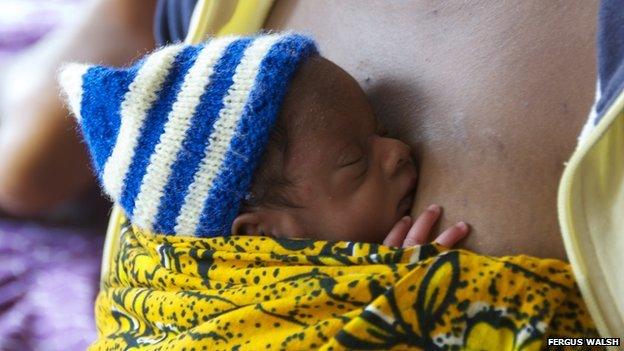
"Kangaroo care" in Bwaila Maternity Hospital
This helps keep premature infants stay warm and promotes bonding between mother and child.
Unicef said a 2014 study of Kangaroo care showed this simple intervention dramatically reduced the risk of hospital infections and hypothermia and encouraged breastfeeding.
Population growth
One of the by-products of Malawi's falling child mortality is the rapid growth, external in its population.

New mothers are encouraged to use contraception for "family spacing"
It rose from four million people in the mid-60s to more than 16 million today.
More than half the population is under 18.
Even if the fertility rate declines sharply, the population is expected to rise to 26 million by 2030, and this is placing a strain on public services and on the security of food supplies.
New mothers are encouraged to use contraception to take control of their fertility. At present, women in Malawi have, on average, nearly six children each.
Mahimbo Mdoe, of Unicef, said: "As women in Malawi see that their children are more likely to survive, then this should lead to them having fewer children.
"In smaller families, those children will be more likely to finish school and be productive economically, which will help them and Malawi to thrive."
- Published25 February 2014
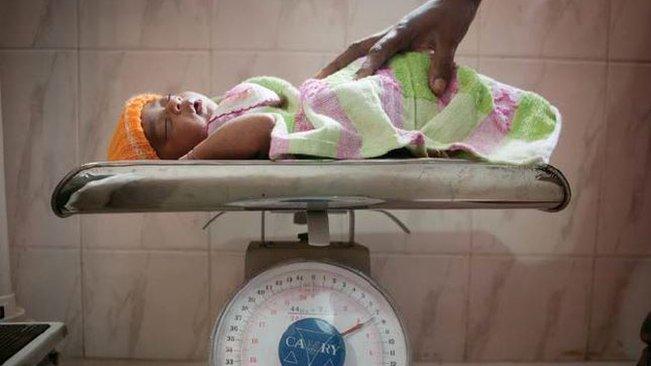
- Published15 September 2011
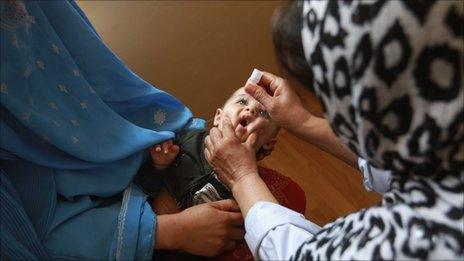
- Published27 January 2014
